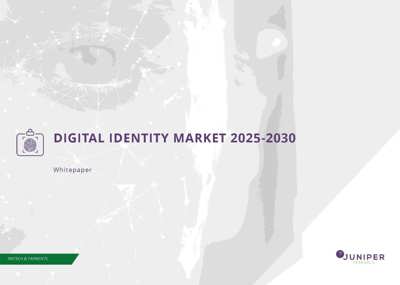How CCaaS is Revolutionising Traditional Contact Centres
There are multiple benefits to enterprises adopting cloud-based CCaaS (Contact Centre-as-a-Service) technologies, as opposed to traditional premises-based contact centre systems. These include:
Comprehensive Omnichannel Communication
The omnichannel experience is imperative to customer experience, as it allows enterprises to offer the same quality of service across a variety of channels and ensure that all customers are served equally. In order to measure KPIs (Key Performance Indicators) across a range of communications channels, enterprises will have to learn to identify and track the clients across these digital channels in order to gather data and analyse the customer journey, to provide insights into customer queries.
Most modern CCaaS solutions have omnichannel capabilities that can be applied to customer service. Customer service agents can use web or app-based software to view customer interactions across a wealth of communications channels, including phone calls, messaging, live chat and social media.
Moreover, the rise of CCaaS allows for customer service agents to handle customer queries from multiple communications channels, as APIs enable the integration of information onto one user interface. This increases the ease of supplying an omnichannel experience.
Social Media Monitoring
The continued growth of social media has resulted in the expansion of communications opportunities for both A2P (Application to Person) and P2A (Person to Application). This does not only provide a marketing outlet, but also an additional channel of communications for both enterprises and consumers which further strengthens the omnichannel experience.
Embracing social media also gives enterprises the opportunity to improve transparency. As the KPI for marketing and customer service is significantly different, it is important to ensure that if a brand wants to establish itself on social media, then it must have the means to deal with customer enquiries, thus promoting the need for a CCaaS solution.
Contact centres and CCaaS platforms must not only use social media as a way to communicate directly with customers, but should also be monitored for public feedback regarding a company. A strong social media customer service model should look to interact privately with customers, as well as publicly addressing comments and mentions to ensure that the brand image is secured for the wider audience.
Flexibility of Cloud-based Services
As contact centres have evolved to serve multiple technology channels, contact centres are now migrating from on-premises infrastructures to cloud based. An on-premises contact system is internally managed and maintained, whereby hardware and software have to be handled on-premises. However, migrating to a cloud-based infrastructure will provide significant competitive advantages and faster ROI due to increased flexibility and implementation of services and decrease in in-house maintenance and upkeep.
One advantage for vendors that provide these on-premises contact centre services is that it is likely that their customers have had the same contact centre solution for many years. As the process of replacing or upgrading infrastructure is expensive and time consuming, it is unlikely that these vendors have analysed the market for replacement infrastructure.
However, as cloud-based contact centre infrastructure is more flexible and externally managed, there is more competition in this market, as it is easier for customer to ‘jump’ from one provider to another. In order for CCaaS providers to reduce customer churn and ensure customer loyalty, they should look to promote an end-to-end contact centre solution so that customers only need to interact with one CCaaS provider.
Within a cloud contact centre network, both customers and agents can take advantage of technologies such as IVR (Interactive Voice Response), co-browsing, programmable voice, interactive calling, amongst others. Moreover, the success of a CCaaS solution will depend on whether the vendor is able differentiate themselves from the market competition by offering next-generation technologies such as RCS.
However, not all CCaaS providers currently offer this comprehensive set of network technologies. In order for them to provide the best customer experience, it is not enough to just support multiple communications channels. They must also be able to use innovative and comprehensive technologies that facilitate communication across these channels. For example, interactive calling leverages 5G networks to offer advanced voice calling functionality, including interactive content and screensharing, directly in the native calling app on smartphones, thus negating the need for third-party applications.
New Capabilities of AI and Machine Learning
The aim of AI and machine learning is to automate experiences and conversational interfaces, and can be integrated into any cloud-based application of a tool.
Due to the cloud’s ability to adopt new functionalities and technologies, AI and automation will allow voice and messaging clouds to provide recommended solutions and next-best actions for customer service agents. This ability to utilise AI in CCaaS will also allow users to view all interactions and digital conversations in real-time, whilst monitoring call routes, messaging termination and clearing.
However, there are potential risks when integrating AI into a contact centre business model. If it is not done correctly then it could increase workload for customer service agents whilst decreasing customer satisfaction. Although the technology can use machine learning to adapt and provide eventual automation, it still needs initial training to be able to answer specific customer questions. It is also important for human agents and AI to have integrated workflows. This will ensure that agents, bots and clients are able to use the same information to ensure consistent service.
Our latest research found:
- The global CCaaS market revenue will reach $15.6 billion by 2027; rising from $4.9 billion in 2022.
- This phenomenal growth of 216% will be driven by the breadth of services offered within comprehensive subscription-based models, including advanced analytics capabilities, AI-enabled chatbots and personalised video solutions.
- Leading CCaaS platforms were assessed and evaluated on criteria such as depth and breadth of offerings, service innovation and future prospects. The leaderboard ranked the top three vendors as follows:
- #1: Twilio
- #2: CM.com
- #3: Infobip
- Twilio has built a flexible CCaaS product offering by supporting multiple OTT messaging applications and voice services. Juniper Research commended Twilio on its intelligent routing and performance-tracking capabilities, which are key in supporting enterprise adoption of omnichannel communications strategies.
- Offering unique innovative services is not enough to stand out in the market. Enterprises will choose their preferred solution based on the comprehensiveness of the value-added services available. As a result, vendors must look to expand the solutions offered via their CCaaS platform to provide crucial differentiation in a highly competitive market.
- Social media platforms, such as Instagram and Facebook, will become an important medium for enterprises to interact with their customers in the future. In turn, it urged CCaaS vendors to integrate inbound communications from these channels into their solutions immediately to provide the maximum reach to end users for CCaaS clients. Offering omnichannel functionality will enable CCaaS vendors to strengthen product portfolios; mirroring the success of the CPaaS (Communications Platforms-as-a-Service) ecosystem.
Latest research, whitepapers & press releases
-
 ReportNovember 2025Telecoms & Connectivity
ReportNovember 2025Telecoms & ConnectivityeSIMs & iSIMs Market: 2025-2030
Juniper Research’s eSIMs and iSIMs research suite offers insightful analysis of a market set to experience significant growth in the next five years. The research suite provides mobile network operators (MNOs), original equipment manufacturers (OEMs), and eSIM management and platforms vendors with intelligence on how to capitalise on the market growth, and guidance on how eSIM-only devices and sensors, SGP.42, in-factory provisioning, and iSIMs will change the competitive landscape.
VIEW -
 ReportNovember 2025Fintech & Payments
ReportNovember 2025Fintech & PaymentsModern Card Issuing Platforms Market: 2025-2030
Our Modern Card Issuing Platforms Market research suite provides a detailed and insightful analysis of this evolving market; enabling stakeholders from banks, financial institutions, fintech companies, and technology vendors to understand future growth, key trends, and the competitive environment.
VIEW -
 ReportNovember 2025Fintech & Payments
ReportNovember 2025Fintech & PaymentsDigital Wallets Market: 2025-2030
Our digital wallets research suite provides detailed analysis of this rapidly changing market; allowing digital wallet providers to gain an understanding of key payment trends and challenges, potential growth opportunities, and the competitive environment.
VIEW -
 ReportOctober 2025Fintech & Payments
ReportOctober 2025Fintech & PaymentsDigital Identity Market: 2025-2030
Juniper Research’s Digital Identity research suite provides a comprehensive and insightful analysis of this market; enabling stakeholders, including digital identity platform providers, digital identity verification providers, government agencies, banks, and many others, to understand future growth, key trends, and the competitive environment.
VIEW -
 ReportOctober 2025Telecoms & Connectivity
ReportOctober 2025Telecoms & ConnectivityTravel eSIM Market: 2025-2030
Our comprehensive Travel eSIMs research suite comprises detailed assessment of a market undergoing rapid growth. It provides insight into how travel eSIM providers can differentiate their services to maximise success in the market over the next two years.
VIEW -
 ReportOctober 2025IoT & Emerging Technology
ReportOctober 2025IoT & Emerging TechnologyDirect to Satellite Market: 2025-2030
Juniper Research’s Direct to Satellite research suite provides satellite providers, investors, and partners, such as Mobile Network Operators, with an extensive analysis and insights into the direct to satellite market.
VIEW
-
 WhitepaperNovember 2025Telecoms & Connectivity
WhitepaperNovember 2025Telecoms & ConnectivityeSIM-only Devices: The Impact on Operators, Consumers, and IoT
Our complimentary whitepaper, eSIM-only Devices: The Impact on Operators, Consumers, and IoT, explores the challenges and opportunities for the three segments, with a particular focus on eSIM-only smartphones and SGP.42.
VIEW -
 WhitepaperNovember 2025Fintech & Payments
WhitepaperNovember 2025Fintech & PaymentsUnlocking the Next Stage of Growth for Modern Card Issuing Platforms
This free whitepaper analyses key trends shaping the modern card issuing space, and the ways in which modern card issuing platforms can capture growth.
VIEW -
 WhitepaperNovember 2025Fintech & Payments
WhitepaperNovember 2025Fintech & PaymentsTop 10 Fintech & Payments Trends 2026
Fintech is evolving fast. From stablecoins to agentic AI, our annual guide reveals the shifts redefining payments, digital identity, and the future of money in 2026. Download your copy today.
VIEW -
 WhitepaperNovember 2025Fintech & Payments
WhitepaperNovember 2025Fintech & PaymentsDigital Wallets: Empowering Financial Inclusivity
Our complimentary whitepaper, Digital Wallets: Empowering Financial Inclusivity, examines the state of the digital wallets market; considering the impact of digital wallets on different geographies, how they are shaping the modern payments landscape through lower transaction fees and promoting financial inclusivity for underbanked populations, and how they are competing with established payment methods.
VIEW -
 WhitepaperNovember 2025Telecoms & Connectivity
WhitepaperNovember 2025Telecoms & ConnectivityTop 10 Telecoms & Connectivity Trends 2026
The next phase of telecoms isn’t coming — it’s already here. From AI agents to new network models, our guide shows what’s changing right now and how it’s transforming the business of connectivity. Download your copy today.
VIEW -
 WhitepaperOctober 2025Fintech & Payments
WhitepaperOctober 2025Fintech & PaymentsHow Digital Identity is Going Mainstream
Our complimentary whitepaper, How Digital Identity is Going Mainstream, assesses the trends that are moving digital identity to be increasingly popular, and challenges to digital identity growth.
VIEW
-
Telecoms & Connectivity
eSIM Connections to Grow 300% Globally in Next 5 Years, as China Presents Instant Opportunities
November 2025 -
Fintech & Payments
Cross-border A2A Transactions to Surpass 11 Billion in 2026 Globally, Thanks to Enhanced Interoperability
November 2025 -
Fintech & Payments
Modern Card Issuing Platforms Market to Surpass $4.2 Billion by 2030, as Juniper Research Reveals Global Leaders Driving Fintech Innovation
November 2025 -
Fintech & Payments
Juniper Research Unveils the Top 10 Trends Set to Shape Fintech & Payments in 2026
November 2025 -
Fintech & Payments
Digital Wallet Users to Surpass Three Quarters of Global Population by 2030
November 2025 -
Telecoms & Connectivity
Juniper Research Reveals 2026’s Defining Telecoms Trends
November 2025






















